The Way It Is/ Analyzing America's open-wheel ladder systemby Gordon Kirby |
 Last week, I discussed the Caterham F1 team's young driver academy which includes American Alex Rossi. This week's column provides an analysis of America's open wheel ladder system through the eyes of Derek Daly and Jeremy Shaw.
Last week, I discussed the Caterham F1 team's young driver academy which includes American Alex Rossi. This week's column provides an analysis of America's open wheel ladder system through the eyes of Derek Daly and Jeremy Shaw.
A former F1, Indy car and IMSA GTP racer, Daly is the father of Conor Daly who scored his second GP3 win in Spain a few weeks ago. Shaw is a radio and broadcast journalist who founded the Team USA scholarship back in 1990 with Jimmy Vasser and Bryan Herta among the early winners. Shaw believes Mazda's Road to Indy ladder system is as good as they come. "So far as I am aware," Shaw says,"there is no other ladder system in the world that compares to what we have in North America with the Mazda Road to Indy, which comprises USF2000, Pro Mazda and Indy Lights. Theoretically, an outstanding driver can work his way from karting to the IZOD IndyCar Series without spending any money. Obviously, that's unlikely to happen, but I don't think anything close to the same kind of financial incentives and opportunities can be found anywhere else." Daly thinks Mazda's Road to Indy scholarship system is well intentioned and provides phenomenal financial support system, but he points out that it's fallen far short of matching the success of Red Bull's international driver development program. Over the past seven years Mazda's scholarship program has awarded more than $8 million to thirteen drivers--Rafael Matos, Dane Cameron, Connor De Phillippi, Joel Miller, John Edwards, Adam Christodulo, Conor Daly, Sage Karem, Spencer Pigot, Tristan Vautier, Jack Hawksworth and Matthew Brabham--to help them graduate from Skip Barber, F2000, Pro Mazda, Formula Atlantic and Indy Lights. 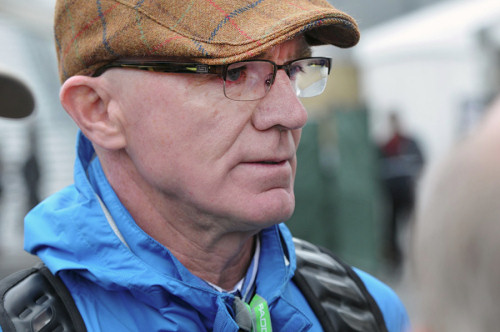 © Gary Gold "The root of the problem is that IndyCar gets so little overall media coverage and as a result the ladder system struggles for anything more than the crumbs of media coverage." Daly believes a much wider and more structured system needs to be created for Americans in America. "They've got to put a structure around these young drivers so there's continuing support over what ever number of years it takes to get them to the top level," he says."And you've got to spend the money more wisely so that there's a real process through the system and a chance for these young guys to come out the other end as future heroes." Indeed, it would be instructive to know how much money Red Bull has spent supporting young drivers over the years. Many, many millions of dollars to be sure. When you consider all the sports and stuntmen Red Bull supports in extreme and other sports it's a massive program. "Who could argue," Daly asks,"that they are by far the world's most successful driver development group in modern motor racing?" 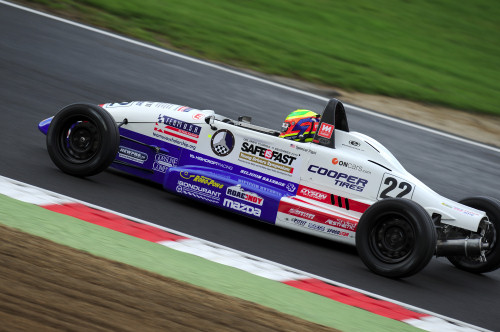 © Jeff Bloxham Meanwhile, Daly believes the death of Formula Atlantic was a serious loss for American racing. "The day that Atlantic collapsed was when I realized how weak the American ladder system is," Daly remarks."When that happened, I knew that Conor had to go to Europe to race in GP3 and then GP2. A young driver has to push himself at the highest level possible and the Atlantic car was a good car to learn in. It always was a good formula and the latest Mazda version was just as good. It looked good for a year or two but then it collapsed and that was a bad day for the sport. "To prove how weak the system is consider that Conor won in Indy Lights at Long Beach in 2011 and the following Sunday he started 29th on the last row of the grid at a GP3 race in Turkey. It took him the full season to be able to run at the front and this year he's won his second GP3 race. "Further proof of how poor our system is today is the fact that Connor de Phillippi is now contracted to Porsche Racing in Germany. Connor is as good an open wheel driver as I've seen for years but he's fallen through the system. He's now a top flight young American kid racing GT and sports cars in Europe. So going back to when Jeff Gordon was allowed to go to NASCAR instead of Indy car racing, we're still letting our open wheel talent get plucked by other forms of racing." Daly is convinced the Road to Indy needs a serious shake up. "Our ladder system is not strong enough to stretch a driver and push him to force him to learn at a higher level," he says."How do we develop drivers that can perform at the highest level all the way up the ladder and be able to take on the world's best? "Our ladder system developing American stars is dead. We need to put in place a five to eight year system to develop star American drivers with great names like all those guys from the past. That's what has to happen and with the system we have in place today it's not structured to do that. 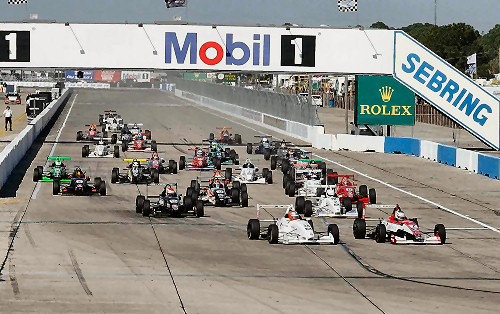 © John Hendrick/US f2000 Daly believes Jeremy Shaw's Team USA scholarship is one of the best things that's happened to American open-wheel racing. "I think Jeremy's system is brilliant because it's Team USA," Daly says."That anchor in the ground is extremely important." Shaw couldn't be happier with the state of his Team USA scholarship. "The program certainly has been ticking all my boxes," Shaw said."The good news is, even since the economic crash in 2007, we've actually managed to raise a little bit more money each year, which has enabled me to expand the program incrementally. I must admit, the goal ever since we started this in 1990 was to sponsor a deserving driver for an entire season. We're still a long way from making that a reality but we have still given quite a few youngsters some good opportunities over the years. "For example, at Indianapolis this year, we had five Team USA scholarship graduates among the field--A.J. Allmendinger, Charlie Kimball, J.R. Hildebrand, Conor Daly and Josef Newgarden--and there was a possibility at one stage that Buddy Rice, who of course won race in 2004, might have joined them too. Plus we had two team owners in Jimmy Vasser and Bryan Herta. So I have to admit to a strong sense of pride. "I think the key to the program's longevity has been the philosophy of taking one step at a time and not over-extending myself. It can certainly be improved by the injection of more cash, but to be perfectly honest, one of the biggest limiting factors is time. Obviously, I have to earn a living myself. I have never taken a cent out of the program, nor do I have any intention of doing so. This is my way of putting something back into the sport, and it's the reason almost all of our supporters are involved, too, but there's only a finite amount of time that I can put toward tying up all the details. It does tend to be a very time-consuming process." Daly thinks Shaw's Team USA concept should be expanded into a more complete top to bottom system. "In my opinion, we need to do exactly what the British do," Daly says."The BRDC has its own Superstars program to financially support British drivers to go out in the world and take everybody on. The Autosport awards is totally for British drivers and the Racing Steps Foundation, which is the biggest contributor to young drivers right now, is strictly for British drivers.\ "I believe that until we become selfish and develop American drivers we're not going to create any new fan or commercial interest in the sport. Let's put a strategic five to eight year plan in place where we're going to develop American drivers at the top level. Unless that happens, everything will eventually implode because major sporting events in a country only thrive when you can wrap local and national pride around them. That does not happen now at a high enough level to tickle the interest of the public and therefore the media. "We are standing by watching the complete structure of American open wheel racing continue to slide downhill as evidenced by nine cars in Indy Lights and Star Mazda also struggling for much a field."  © John Hendrick. "The Skip Barber system is a good place to get your feet wet and learn about racecraft," Daly says."They have great instructors and coaches but 98 per cent of all the coaching I have experienced at that level concentrates on telling the driver what the right line is through the corner. Well, the good drivers don't need that information. They already instinctively know the right line. So the specific elite athlete coaching, like the NFL would have, is missing. "F2000 is the next level and to me that's like going to high school for a young racing driver. That's where you begin to learn your trade. But other sports like the NFL, the NBA and Major League Baseball are different because they have scouts at the F2000 level who look for kids with potential and bring them into their specialized training system. That kind of thing exists in Europe with the F1 teams, but it doesn't exist here and it needs to start at the F2000 level." Shaw is a big believer in F2000. "There's not much wrong with USF2000," he says."The cars are great and relatively cost-effective. There might be a few small things I could tweak but nothing too substantial. Personally, I'm delighted to see FF/F1600 making such a strong comeback, too. Formula Ford has been helping youngsters develop their talents since 1967, which is amazing. There's still nothing better. "Personally, I love the fact that drivers have to learn how to heel-and-toe and shift gears with an H-pattern gearbox. It's true, these skills might not be relevant as drivers move up the ladder these days, but that's not the point. The more skills they possess, the better they will become. The category has been enhanced enormously by the introduction of the Honda Fit engine and is the perfect way for anyone to progress either from karting or the various racing schools, such as Skip Barber, to USF2000." Shaw is confident that both Pro Mazda and Indy Lights will take healthy turns in the coming years. "The next two levels, Pro Mazda and Indy Lights are obviously in need of some help, which I believe is on the way," Shaw commented."Basically, both series need to offer more value for money. I believe Pro Mazda, in particular, has benefited greatly from the adoption of double-race weekends, and USF2000 even offers a triple race weekend this year, and I'm sure there is a lot more to come." Daly disagrees. "I'm afraid both Star Mazda and Indy Lights are so weak that there's no credibility if you win there," Daly declares."The rest of the world outside of America looks at those series and completely discounts them because there's no depth to them. So the problems get compounded as you go forward because there's no depth or structure. The system isn't there. It's strung together but there's no structure to develop the drivers at a high enough level." As I've written many times, NASCAR has built a system down to the grass roots with the Nationwide and Truck series at the top of the ladder. Beneath the Truck series NASCAR runs a brace of regional championships. At the top of this segment of NASCAR's ladder system is the K&N Pro Series, split into Eastern and Western championships. Then there's the Whelen Modified Tour and Whelen South Modified Tour and at the grass roots level there's the Whelen All-American Series that runs at sixty local short tracks across North America with individual state and Canadian provincial championships. 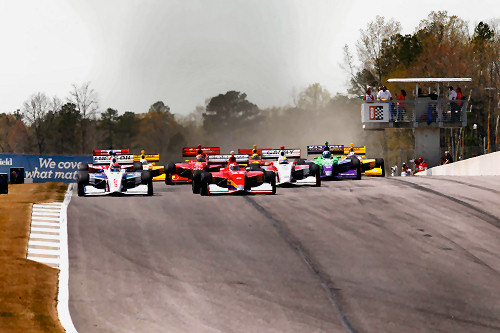 © IndyCar Meanwhile, American open wheel and sports car racing have suffered from a lack of leadership and consistency. Through the forties, fifties and into the sixties, midget and sprint car racing provided fertile ground for American talent to move into Indy car racing but the rear engine revolution of the sixties brought a new era as Formula Super Vee and Atlantic replaced midget and sprint car racing as the training grounds for Indy car drivers and crewmen. Super Vee benefitted from the support of Volkswagen and Bosch, but Formula Atlantic didn't enjoy much help from the traditional sanctioning bodies or many commercial partners. Toyota helped Atlantic for quite a few years and more recently Mazda aided Atlantic's fleeting rebirth before the category's final failure a few years ago amid the IRL/Champ Car merger. Today, Atlantic and Super Vee are dead and the latest version of the 'Road to Indy' includes the Pro Mazda and Cooper Tires F2000 series as well as the Jim Russell and Skip Barber entry level series. At the top of IndyCar's ladder system is Indy Lights, but the Lights series is a tough sell as high costs and very little overall media coverage have contributed to the small fields of recent years and a dearth of American talent on the grid. This year fewer than ten Indy Lights cars are expected at most races, a sharp contrast to the thriving fields filling NASCAR's excellent ladder system. And as Daly says: "There's nothing to attract the American race fan to watch Tristan Vautier or Jack Hawksworth." While NASCAR built its ladder system, open-wheel racing in America has stumbled through the transition from midget and sprint cars to Formula Ford, Super Vee and Atlantic and then to F2000, Star Mazda and Indy Lights. It's been a rocky and poorly managed road and has been completely outflanked by NASCAR so that NASCAR rather than IndyCar is the goal for most of today's young American kart racers. "Another example is NASCAR's 'Next Nine' program which identifies the next young NASCAR stars," Daly points out."They've got programs like that and all the top Sprint Cup teams support and develop young drivers. NASCAR is so far ahead of Indy car racing in so many ways. "The biggest problem IndyCar has is the lack of American heroes," Daly adds."When the long trail of American superstars imploded there was nothing left for the young drivers to reach for. So we have to create a system that's going to start developing heroes. But even with a plan in place that's going to take time. "What we're seeing is nobody cares. We forgot many years ago that we have to invest in our future. I don't know any business that doesn't invest for the future. The problem is the American public and media don't have any interest because there are no American superstars to get them emotionally involved with IndyCar." For many years the likes of A.J. Foyt, Parnelli Jones, Mario Andretti, Bobby and Al Unser, Johnny Rutherford, Gordon Johncock, Rick Mears, Bobby Rahal and Danny Sullivan were known to the American public, not just fans of motor racing. And so it was for many decades before that going back to the days of Jimmy Murphy, Tommy Milton, Frank Lockhart, Louis Meyer, Wilbur Shaw, Ted Horn, Rex Mays, Mauri Rose, Bill Vukovich, Jimmy Bryan and Rodger Ward through Rahal, Sullivan, Michael Andretti and Al Unser Jr. But the end of the road for American open wheel stars abruptly appeared as the 21st century arrived and Rahal, Andretti and Unser retired. Foreign drivers took over Indy car racing as no Americans rose to replace the old names at the same time that the CART/IRL civil war wreaked irreparable harm on the sport. 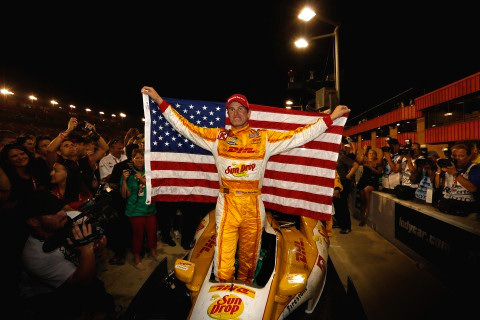 © LAT USA "Ryan Hunter-Reay is a good start," Daly observes."But it's going to take years for Ryan to move from winning races to heroic status and winning IndyCar races isn't considered heroic anymore because the credibility just isn't there. So Ryan has to win so many races and completely dominate the sport to even touch hero status. We hope he can do that and we also hope Marco can start winning races and Graham Rahal can get his act together." Marco Andretti and Graham Rahal are in their eighth and seventh years respectively racing Indy cars. Their fathers made their names by winning races early in their careers and contending for championships on a regular basis when the sport was at its healthiest. But Daly believes Marco and Graham were ill-equipped when they arrived in Indy cars because they had come through a weak system. Daly believes if they were to become champions at the highest level they needed to come through a much hotter, tougher cauldron. "Graham has told me that and Michael has said the same thing to me about Marco," Daly says."If they were winning races we would have headlines today about big American names and much more interest in IndyCar racing. But it hasn't happened." It surely was a mistake for Marco and Graham not to tackle racing in Europe, which is international motor racing's cauldron for new talent. Young drivers from around the world go to Europe to prove themselves and so it's been for almost half a century since Emerson Fittipaldi leaped to F1 from Formula Ford back in the late sixties. But as Daly points out, times have changed considerably from those days. "In Emerson's heyday and Formula Atlantic's heyday, when Gilles Villeneuve rose to prominence," Daly observes,"there wasn't data and telemetry like there is now and there weren't managers and coaches like there are today. It was nowhere near as specialized as it is today. "Another thing that's happened is that with the advent of spec cars the drivers had to get a lot sharper and have lot more narrow a focus because everybody had the same car. Instead of having an advantage that you could engineer into your car everyone has the same performance potential from the car. "Therefore, the driver has to perform at a physically higher level and also at a mentally and organizationally higher level. All the finer details suddenly became more important and the combination of this with the arrival of data and telemetry moved us into an entirely different environment. "And this is another area--data, telemetry and coaching--we're we've been left behind in America. As spec cars arrived we forgot about the need to develop ourselves as drivers. Racing drivers don't develop in America at a level that's high enough to compete against the rest of the world. That's the rut we're stuck in, which is part of the reason why Conor had to leave and go to Europe." Conor Daly is racing for Nicolas Todt's ART team in the GP3 series this year and scored his second GP3 race win earlier this month. 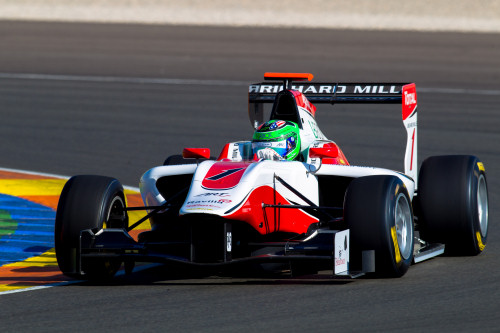 © GP3 Series Derek has no doubts that his son is racing on the right continent. "We don't know yet if Conor is good enough to make it to Formula One," Daly says."But because of the system in Europe that he's racing in he's going to be developed to the highest level possible." Daly recalls an indelible message Frank Williams passed on to Conor a few years ago. "In 2010 when Conor dominated the Star Mazda series he went to the Canadian Grand Prix and met Frank Williams. Frank was aware of what Conor was doing because I was keeping him up to date and Frank sat down with Conor and said to him point blank, 'Conor, we don't care what races you win in America. We don't consider it has any credibility. If you want to impress us, you have to come over to Europe and win.'." Jeremy Shaw believes that with Austin's successful debut and Weehawken hoping to happen next year, the possibility will exist to develop a full American scholarship program for young Americans in Europe from the Team USA base through F3, GP3 and GP2. "I would certainly hope so," Shaw says."The successes in recent years of Alex Rossi, Conor Daly and, a couple of years ago, Josef Newgarden, shows that Americans can thrive if they're prepared to work hard. There's no doubt it's tough to raise the level of financing that's required to progress through the ranks in Europe, but that's what anyone with aspirations of reaching F1 has to do. There is no magic bullet and it does take a tremendous commitment, both in and out of the car. No stone can be left unturned. "Some youngsters seem to believe that merely competing in those categories will somehow open the doors to moving on up the ladder," Shaw adds."But nothing could be further from the truth. The most important element is to be properly prepared for each step along the way." Tackling a career in motor racing is one of the toughest, most expensive challenges in all of sport and there's no doubt that if American racing and American drivers are to once again become respected constituents on the international scene the sport's powers-that-be are going to have to step up and take a serious leadership role in recasting and reinvigorating our ladder system with the clear goal of developing American heroes. Without that, nothing else might matter. |
Auto Racing ~ Gordon Kirby Copyright 2013 ~ All Rights Reserved |
